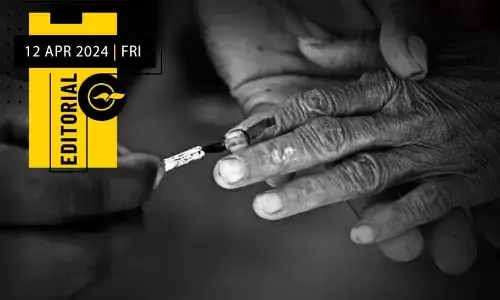
Your face can reveal your heart condition
text_fieldsNew York: The facial features of an individual can reflect whether or not a person is experiencing atrial fibrillation, a treatable but potentially dangerous heart condition.
With the assistance of a web camera and software algorithms, scientists demonstrated that subtle changes in skin colour can be used to detect the uneven blood flow caused by atrial fibrillation. "This technology holds the potential to identify and diagnose cardiac disease using contact less video monitoring," said Jean-Philippe Couderc from University of Rochester's heart research follow-up program.
The technology employs a software algorithm developed by Xerox Corporation Ltd that scans the face and can detect changes in skin colour that are imperceptible to the naked eye. Sensors in digital cameras are designed to record three colours: red, green and blue. Hemoglobin, a component of blood, absorbs more of the green in the spectrum of light and this subtle change can be detected by the camera's sensor.
During the study, participants were simultaneously hooked up to an electrocardiogram (ECG) so results from the facial scan could be compared to the actual electrical activity of the heart. The researchers found that the colour changes detected by video monitoring corresponded with an individual's heart rate as detected on an ECG.
"Essentially, the irregular electrical activity of the heart found in people with atrial fibrillation could be identified by observing the pulses of blood flowing through the veins on the face as it absorbed or reflected green light with each heart beat," Couderc explained.
The study found that the video monitoring technique called videoplethymography had an error rate of 20 percent, comparable to the 17 to 29 percent error rate associated with ECG measurements. The results were published online in the journal Heart Rhythm.























